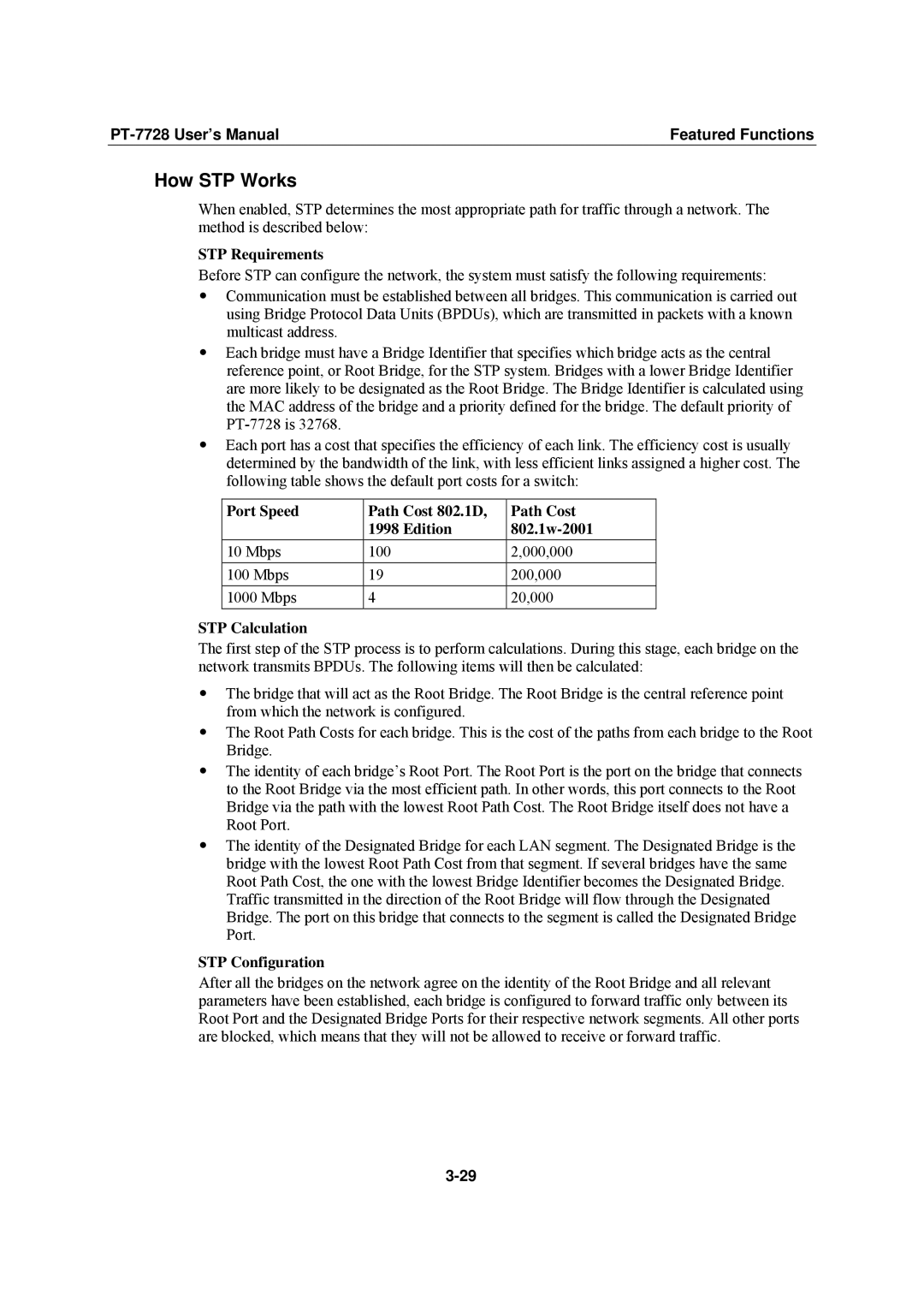| Featured Functions |
How STP Works
When enabled, STP determines the most appropriate path for traffic through a network. The method is described below:
STP Requirements
Before STP can configure the network, the system must satisfy the following requirements:
yCommunication must be established between all bridges. This communication is carried out using Bridge Protocol Data Units (BPDUs), which are transmitted in packets with a known multicast address.
yEach bridge must have a Bridge Identifier that specifies which bridge acts as the central reference point, or Root Bridge, for the STP system. Bridges with a lower Bridge Identifier are more likely to be designated as the Root Bridge. The Bridge Identifier is calculated using the MAC address of the bridge and a priority defined for the bridge. The default priority of
yEach port has a cost that specifies the efficiency of each link. The efficiency cost is usually determined by the bandwidth of the link, with less efficient links assigned a higher cost. The following table shows the default port costs for a switch:
Port Speed | Path Cost 802.1D, | Path Cost |
| 1998 Edition |
|
10 Mbps | 100 | 2,000,000 |
100 Mbps | 19 | 200,000 |
1000 Mbps | 4 | 20,000 |
STP Calculation
The first step of the STP process is to perform calculations. During this stage, each bridge on the network transmits BPDUs. The following items will then be calculated:
yThe bridge that will act as the Root Bridge. The Root Bridge is the central reference point from which the network is configured.
yThe Root Path Costs for each bridge. This is the cost of the paths from each bridge to the Root Bridge.
yThe identity of each bridge’s Root Port. The Root Port is the port on the bridge that connects to the Root Bridge via the most efficient path. In other words, this port connects to the Root Bridge via the path with the lowest Root Path Cost. The Root Bridge itself does not have a Root Port.
yThe identity of the Designated Bridge for each LAN segment. The Designated Bridge is the bridge with the lowest Root Path Cost from that segment. If several bridges have the same Root Path Cost, the one with the lowest Bridge Identifier becomes the Designated Bridge. Traffic transmitted in the direction of the Root Bridge will flow through the Designated Bridge. The port on this bridge that connects to the segment is called the Designated Bridge Port.
STP Configuration
After all the bridges on the network agree on the identity of the Root Bridge and all relevant parameters have been established, each bridge is configured to forward traffic only between its Root Port and the Designated Bridge Ports for their respective network segments. All other ports are blocked, which means that they will not be allowed to receive or forward traffic.
